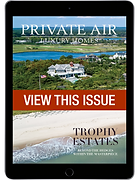ARTS & COLLECTIBLES
A SPECTRUM OF CREATIVITY:
THE POWER OF
COLOR
How the use of color transforms
the energy of spaces.
ELLA FORSTER, RESEARCHER & CURATOR OF ARTELIER

Color & Technology: Thomas Trum
Thomas Trum’s experimental approach uses unconventional techniques to paint on paper, canvas, and walls. With tools like super-sized felt pens and machines originally for road line marking, his active process is based on trial and error, resulting in enthusiastic and dynamic end results.
Thomas dives deep into his materials, researching every aspect before incorporating them into his work. Whether working on a small piece of paper or a large mural, his approach remains the same. With paint as his muse, Thomas brings his colorful large-scale work to public spaces.
Color & Textile: Nike Schroeder

Nike Schroeder, a contemporary fiber artist from Germany, now based in LA, explores the interaction of colors with the viewer. Her work emphasizes size and color, creating sensory experiences that range from warm, light, and earthy tones to more robust, darker anchor points.
Using rayon thread for its smoothness and sheen, Nike Schroeder’s abstract body of work has been developed over a decade. Instead of using stitches to hold things together, she allows the excess thread to become the art piece, creating a contemporary
aspect. Inspired by Robert Irwin, Nike is focused on the visual impact of light on geometric forms and the viewer’s sensory experience.

Color & Glass: Germans Ermičs
Germans Ermičs wields light, space, and color to catalyze a shift in how we perceive objects. For the past few years, he has crafted refined and ethereal pieces of glass furniture.
Because of the utilitarian functions of glass, we rarely pay it any mind, as we encounter it daily. But in Ermičs’s designs, glass becomes the stage for exquisite color treatments: It can be soft and frosted to blur the edges of form; ombré, to gently draw your eye across the surface; or mirrored, to reflect and manipulate the space you occupy.
Color & Acrylic: Katharina Grosse

Katharina Grosse is renowned for her in situ paintings, where explosive color is sprayed onto architecture, interiors, and landscapes. By embracing incidents that arise during her work, she opens up spaces to countless perceptual possibilities.
Grosse uses a spray gun to distance herself from the artistic act and stylize gesture as a propulsive
mark. Her art is a psychedelic exercise in the interactions of color, thought, and feeling, executed on a colossal scale. Grosse’s site-specific installations challenge preconceived notions of painting by using industrial tools to spray unmixed acrylic across ceilings, walls, floors, and landscapes.
Color & Light: James Turrell

For over half a century, the American artist James Turrell has worked directly with light and space to create artworks that engage viewers with the limits and wonder of human perception. New Yorker critic Calvin Tompkins writes, “His work is not about light or a record of light; it is light — the physical presence of light made manifest in sensory form.”
Trained in perceptual psychology, he references from Parable of Plato’s Cave to suggest that we construct our own reality based on sensory limitations and cultural norms. His work shows how we
internally create the colors we see and shape our perceived reality.



A Colourful Residence Project in Amman, Jordan
This triptych was commissioned for a collector’s family home living area, offering a playful edge and a pop of color. The sleek, neutral interior design scheme was intentionally pared back, and so the collector wanted art that would immediately catch the eye.
The triptych would explore three complementary color ways, creating a sense of depth through tonal variety and subtle patterns. The complex geometry, resembling an unfurling flower or a radiating spiral, was inspired by traditional Arabic geometric designs. This element helps connect to the context of the project, bringing a local angle.

Join our mailing list to receive curated updates, special features, and invitations to events that define the world of the discerning few.
Sign up today and never miss what’s next.






